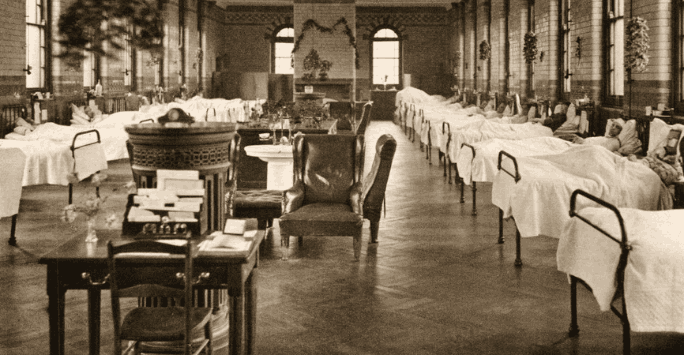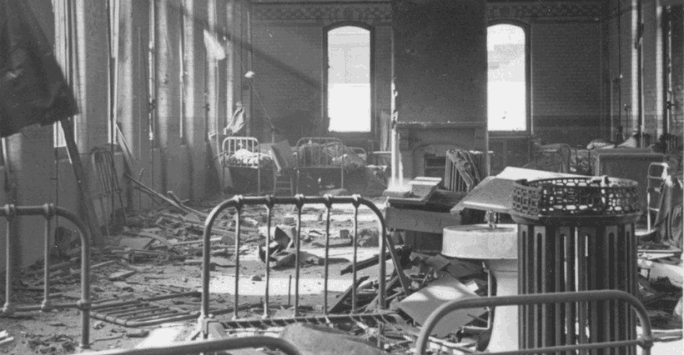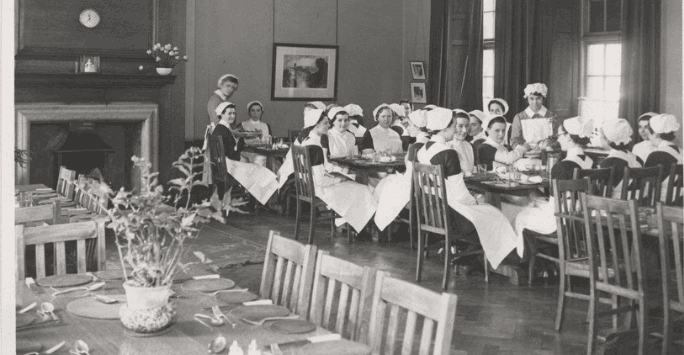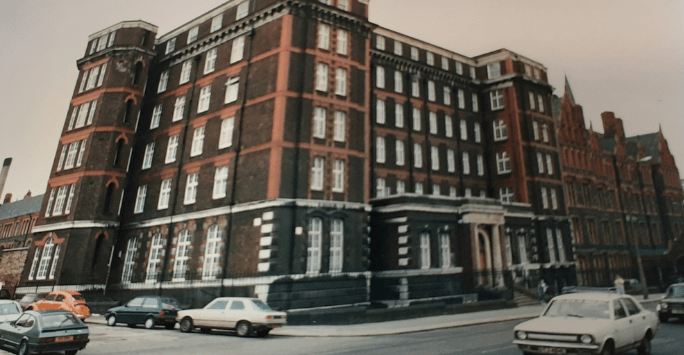
- University home >
- School of Medicine >
- Why Liverpool? >
- Heritage
Heritage
Students at Liverpool’s School of Medicine become a part of a unique and rich heritage.
Established in 1834, Liverpool has been at the forefront of medical practice and research for over 180 years and is associated with numerous leading medical alumni, including three Nobel Laureates.
The historic Waterhouse building, home to the School’s state-of-the-art Clinical Skills teaching rooms and Learning Zone, was first opened in 1824 as the Liverpool Infirmary.
Cedar House, now the bustling heart of the School community on campus, followed in 1933, originally as nurses’ accommodation to those studying at the infirmary next door.
Liverpool School of Medicine in dates
1824: a new infirmary opens on Brownlow Hill in September 1824, designed by Liverpool architect John Foster. This larger facility replaces the previous infirmary located on Shaw’s Brow, a site now occupied by St George’s Hall, to accommodate the rapidly expanding population of a city thriving on industry.
- The facility was renamed the Liverpool Royal Infirmary following a visit from Queen Victoria in 1851.
- In 1862, the Training School for Nurses was established to serve the Infirmary and the district nursing service – the first in the country.
1889: the first stone for a newer, larger infirmary is laid in 1887 by the Earl of Derby. The new building, designed by Alfred Waterhouse, opened in November 1889. It would remain a hospital for 89 years.
- Waterhouse was born in Liverpool and is known for his Victorian Gothic Revival architecture design, and particularly for his work on Manchester Town Hall and London’s Natural History Museum.
- Waterhouse also designed three other University of Liverpool buildings nearby, the Victoria building (now the Victoria Gallery & Museum), Thompson Yates and Whelan Buildings.
- The Waterhouse building, as it is now known, is a Grade II listed building.
1978: a new Royal Hospital opens on Prescot Street to replace three other city centre acute hospitals in operation at that time, including the Liverpool Royal Infirmary.
- Its location near the University of Liverpool was chosen for its close proximity to the University of Liverpool for medical education and research purposes.
1994: The Waterhouse building lies in a state of derelict until it is acquired by the University for £1 from Liverpool City Council and work begins to restore the building to its former glory – a project that spanned 12 years in total.
- Most of the original wards are now state of the art teaching facilities and research laboratories for institutions including the University’s School of Medicine, Liverpool Cancer Trials Unit and Brownlow Hill Group Practice.

One of the wards at Liverpool Royal Infirmary, Christmas 1915
Waterhouse building fun facts
Did you know:
- When the building was first acquired by the University of Liverpool, a competition was held to decide on a name and the future-facing ‘Foresight Building’ was chosen. However, in 2010, to mark the opening of the newly refurbished A & B Blocks, it was decided to change the name to that of its designer - Alfred Waterhouse.
- Along the walls of B Block, where Clinical Skills teaching takes place, you can see shrapnel damage from where the building was bombarded on 1st – 7th May 1944 during World War II.

A ward following the bombardment, 1944
- It took 21 years to completely refurbish all nine blocks of the Waterhouse Building. Some areas, including the original operating and lecture theatres at the centre of the complex, did not escape demolition and are now occupied by a courtyard garden and car park.
- The latest refurbishment of F Block, for the University’s Biostatistics Institute, was made at an investment of £3.8 million. In 1889, it cost £181,000 to build Waterhouse’s infirmary, compared to £26,000 for John Foster’s first offering, and a mere £2600 for the original infirmary on Shaw’s Brow.
- Given the building’s rich history and iconic design, it has been used on many occasions as a film set for movies and TV, including most recently Peaky Blinders.
Cedar House transformed
Originally serving as accommodation for nurses studying at the Liverpool Royal Infirmary next door, Cedar House is now home to Liverpool School of Medicine.
It underwent a radical refurbishment in 2019 where £5million was invested to transform the space into a new and engaging learning and social environment for our 1,500 student doctors, including the addition of a brand-new student hub, modern teaching spaces, anatomy revision room and group study areas.
Little remains from the building’s previous iteration, but you can still catch glimpses of its history here and there. In the School’s Meeting Hall, named after Dr Richard Formby, Co-founder of the Royal Institution, you can still see the grand fireplace. This space was previously a dining room where students would enjoy meals accompanied by music from the piano.

Student nurses at lunch, 1944
The Pembroke Place entrance was home to the matron’s offices and sitting areas, now occupied by workspaces, including the School’s main office where students can go with any enquiries. Upstairs, the students’ former bedrooms have been transformed into teaching facilities and offices. Indeed, the bedroom of former student nurse Vicky Bond (now one of our Clinical Skills Lecturers) is now the technical room for our simulated learning suite.

Cedar House entrance, late 1980s
Planning is now going ahead for the new Liverpool Academic Health Science Campus which will expand our facilities, modernise teaching technologies and improve the quality of health education for the next generations of healthcare professionals. Stay up-to-date with this and all the latest news from the School of Medicine.

The new face of Cedar House, 2019
Photos from Liverpool Royal Infirmary Nurses League Association and former student nurse Roger Hamlett.
Back to: School of Medicine